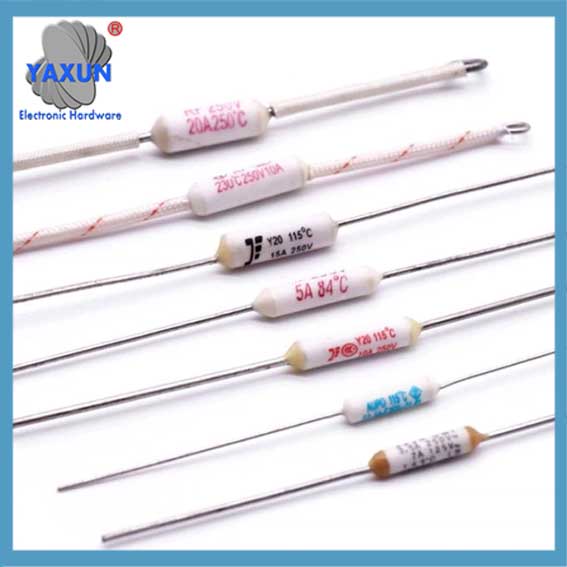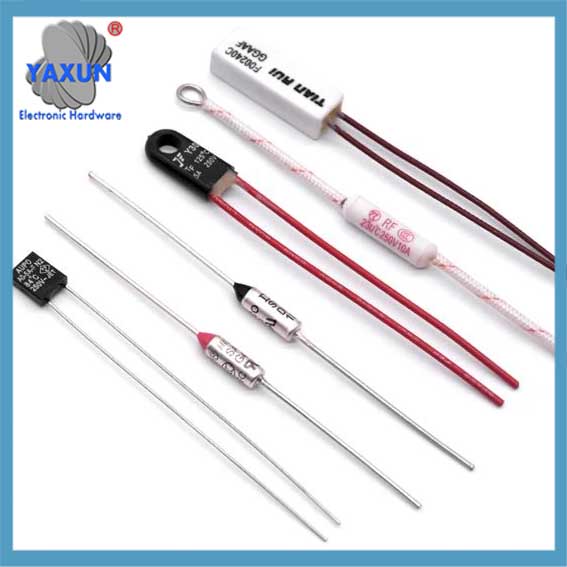产品类别
产品标签
Arlin F00240C 10A 240C GHD 直发器热熔断器
热熔断器是一种非常常见的电子元件,用于保护机电设备过热. 也称为过温保护器, 过热保护, 和温度保护. 热熔断器置于机电设备发热部分附近,串联在设备电源电路或控制电路中. 当设备温度因某种原因升至热熔断器的额定值时, 热熔断器自动熔断并切断设备供电电路,防止设备因过热而损坏,保护机电设备.
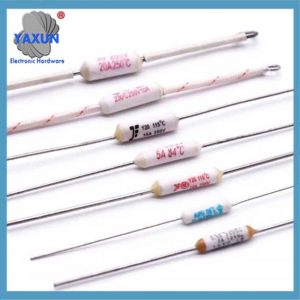 吹风机温度保险丝, 电熨斗, 电饭锅, 电烤箱, 变压器, 发动机 |
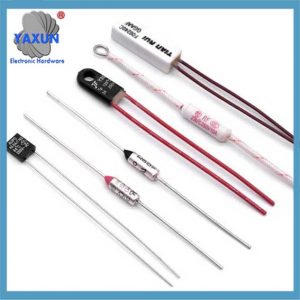 直发器过热保护用热熔断器 |
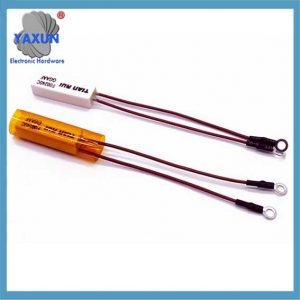 Arlin F00240C 10A 240C GHD 直发器热熔断器 |
顾名思义, 当机电或电气设备的温度升至工作温度时,热熔断器使靠近设备的热熔断器内部感温材料发生变形 (该值由热熔断器制造商在制造时指定), 从而断开电源电路.
1. 标记: 制造商的商标, 240C热熔断器外壳上应清楚标明额定电压和额定电流.
2. 温度特性: 测试期间, 采用电流小于10mA的指示灯来显示电路的通断.
3. 额定工作温度 (TF): 将样品放入恒温器中, 保持在TF-20℃ 2 小时, 然后以0.5~1K的速率升温至熔化温度. 熔化温度应在偏差范围内.
4. 保持温度 (TC): 将样品放入恒温器中, 施加不超过额定电压的电压, 负载电流10A. 置于TC-6℃下保存 168 小时. 测试后, 样品不应熔化或损坏.
5. 湿热测试: 将样品放置在38-42℃的温度下, 相对湿度 90%-95%, 和一个测试周期 48 小时. 测试后, 执行文章 3, 应该满足要求.
6. 冷热冲击: 将样品置于-18℃低温箱中, 保留它 15 分钟, 取出并放置在室内不少于 5 分钟, 然后放入TF-20℃恒温箱中 15 分钟, 取出并放置在室内不少于 5 分钟. 后 3 测试周期, 执行文章 3 测试, 应符合条款的要求 8 和 9.
7. 内阻: 在两根引线之间测量 15 分钟,包括外壳, 样品内阻应小于5mΩ.
8. 绝缘电阻: 样品熔化后, 用500V兆欧表测量两引线间绝缘电阻应在0.2MΩ以上.
9. 电气强度: 第4次测试后, 500V 交流电压施加在两根引线之间 1 分钟, 并且不应发生闪烁或击穿.
10. 紧张: 固定样品并沿轴向对引线施加5Kg拉力. 10S后, 不应有拉扯或松动.
11. 弯曲: 固定样品并在距外壳6mm处施力. 首先将引线弯曲 45 度并将其返回到初始位置. 不应有破损或裂纹. (只能测试引线的一端)
12. 外貌: 外壳应该光滑, 无裂纹和机械损伤; 铅应该是明亮的, 与外壳连接应牢固、无松动; 环氧分支封装应光滑, 无流量, 并且铅不应该挂在树枝上.
联系我们
等待您的电子邮件, 我们将在短时间内回复您 12 小时提供您需要的有价值的信息.
 English
English العربية
العربية Български
Български 粤语
粤语 中文(简体)
中文(简体) 中文(漢字)
中文(漢字) Nederlands
Nederlands Suomi
Suomi Français
Français Deutsch
Deutsch Ελληνικά
Ελληνικά Magyar
Magyar Italiano
Italiano 日本語
日本語 한국어
한국어 Polski
Polski Português
Português Română
Română Русский
Русский Slovenščina
Slovenščina Español
Español Svenska
Svenska ภาษาไทย
ภาษาไทย Türkçe
Türkçe Tiếng Việt
Tiếng Việt
